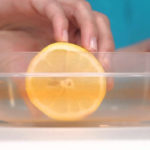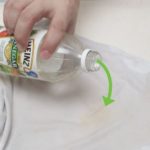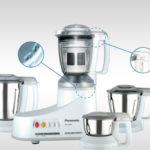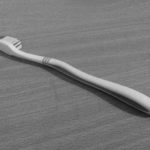The smooth surface of plastic cutting boards is their biggest advantage. You can pour boiling water or scrub them without worrying about damaging the board. But is that enough to conclude that plastic cutting boards are superior to wooden ones?
Professor Dean O. Cliver, a food safety expert at the University of California, and a group of students cultured salmonella bacteria on new plastic and wooden cutting boards. They then cleaned the boards with soap and hot water, using a dishcloth.
With wooden cutting boards, the bacteria are drawn into the grooves on the surface, where they cannot survive and will eventually die. Even old wooden boards with deep grooves showed low levels of bacterial presence, similar to new boards.
“You might think that the bacteria trapped in the grooves would re-contaminate the food when we chop with a sharp knife,” Cliver told Rodalesorganiclife. However, his research showed that the bacteria never reappeared on the surface, even when food was chopped multiple times with a sharp blade.

Wooden cutting boards absorb bacteria, while plastic ones do not. This leaves bacteria on the surface of plastic boards, making them less safe.
In contrast, the plastic cutting boards still had bacteria present even after multiple cleanings and disinfecting. “With plastic boards, even when rinsed under hot running water, bacteria in the grooves can survive,” Cliver said. “Dishwashers don’t solve the problem because the bacteria don’t die; they just get rinsed off and re-adhere to dishes and utensils inside the machine. Even when using disinfectants like chlorine bleach, some bacteria remain in the grooves of the plastic boards.”
A similar study by the Institute of Technology and Management found that plastic cutting boards are extremely prone to hard-to-remove residue from foods unless they are soaked in disinfectant overnight. These residues provide an ideal environment for bacteria and mold to thrive.
Following Professor Cliver’s research, both the United States Department of Agriculture (USDA) and the Food and Drug Administration (FDA) have recommended the use of cutting boards made from maple wood or other hard woods. However, it’s important to remember that you won’t gain any benefits from using a wooden cutting board if you don’t clean it properly before use. Cliver’s advice is: “Don’t let food residue build up on the surface. Clean it thoroughly during use.”
Professor Cliver also conducted an experiment that showed microwaves can effectively kill bacteria, even those deep below the surface. Therefore, he suggests that after cleaning the cutting board in the usual way, you should put it in the microwave for five minutes, doing this about twice a week. This method is only suitable for wooden cutting boards, as plastic ones cannot withstand high temperatures. Do not put wooden cutting boards with metal wrapping into the microwave.
By: Hope




































